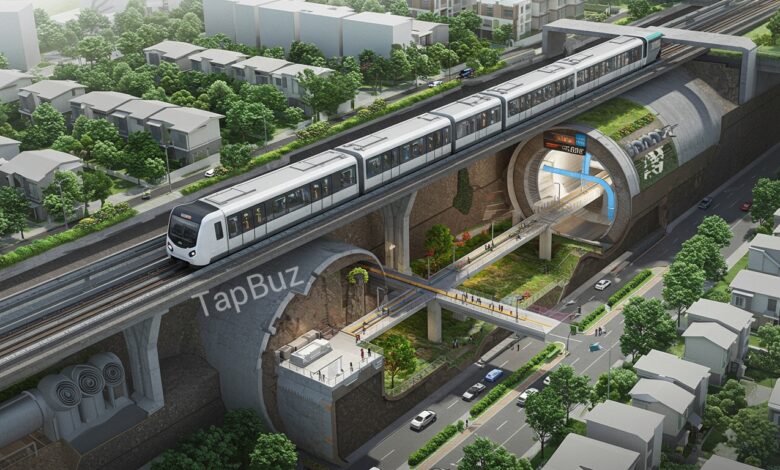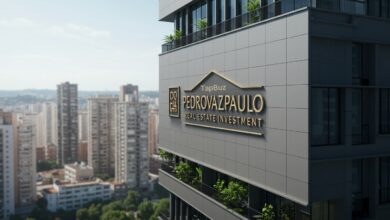Metro Manila Subway to Go Under Corinthian Village: A Game-Changer for Urban Transit

The Metro Manila Subway Project (MMSP) is poised to revolutionize the Philippine capital’s transportation landscape, marking a significant milestone in the country’s infrastructure development. With Metro Manila facing perennial traffic congestion, this ambitious subway project promises to provide a faster, more efficient, and environmentally friendly alternative to road-based transport.
A key aspect of this subway’s development is its planned route beneath Corinthian Village, an exclusive residential enclave in Quezon City. While this routing decision has sparked discussions, it is part of a meticulously planned strategy to optimize Metro Manila’s urban mobility. This article explores the details of the MMSP, its impact on Corinthian Village, and the broader implications for Metro Manila’s transit future.
Metro Manila Subway Project: An Overview
What is the Metro Manila Subway?
The Metro Manila Subway, also referred to as the Mega Manila Subway, is the first fully underground mass rapid transit system in the Philippines. The project is being spearheaded by the Department of Transportation (DOTr) in collaboration with the Japan International Cooperation Agency (JICA), which is providing funding and technical expertise.
Once completed, the subway will cover 33 kilometers and will have 17 stations, stretching from Valenzuela City in the north to Parañaque City in the south, with a spur line connecting to Ninoy Aquino International Airport (NAIA) Terminal 3. The project is expected to serve around 370,000 passengers daily, significantly reducing travel time across Metro Manila.
Key Features of the Subway:
- Underground Transit: A fully underground system to minimize land acquisition and surface disruptions.
- High-Speed Travel: Trains will run at a speed of 80 km/h, reducing travel time between key areas.
- Environmental Benefits: The subway will help cut down on carbon emissions by reducing reliance on private vehicles.
- Flood-Resistant Design: Built with flood control measures to withstand Manila’s frequent heavy rains.
The Route and Corinthian Village
Why is the Subway Going Under Corinthian Village?
The planned subway alignment includes an underground section that will pass beneath Corinthian Village, a high-end residential subdivision near Ortigas Center. The primary reasons for choosing this route include:
- Strategic Location – Corinthian Village is situated between major business districts such as Ortigas Center, Makati, and Bonifacio Global City (BGC). This makes it a key transit corridor for commuters.
- Optimal Tunnel Placement – The subway’s path was designed to minimize disruption to existing road networks and structures while maximizing efficiency.
- Connectivity Benefits – The subway will improve access to Corinthian Village and nearby areas, benefiting residents and workers in the vicinity.
Impact on Corinthian Village Residents
While the subway brings long-term benefits, its construction raises concerns for residents of Corinthian Village. The primary concerns include:
- Construction-Related Noise and Vibrations – Tunnel boring machines (TBMs) will be used for excavation, and while they reduce surface disturbances, some vibrations may still be felt.
- Property Value Fluctuations – During construction, real estate prices might fluctuate due to perceived inconveniences, but in the long run, property values could rise due to improved accessibility.
- Safety and Structural Integrity – Engineers have assured that tunneling will take place at significant depths to prevent damage to homes and infrastructure.
Construction and Engineering Solutions
To address these concerns, the DOTr has implemented several engineering strategies to ensure a smooth and safe construction process:
Tunnel Boring Machines (TBMs):
The project uses state-of-the-art TBMs to minimize disruptions to the surface. These machines operate deep underground, creating tunnels without the need for extensive excavation on the surface.
Noise and Vibration Control:
- Rubber dampers and shock-absorbing materials will be used to reduce vibrations.
- Strict construction schedules will be followed to limit noise pollution, especially during nighttime.
Environmental and Safety Measures:
- The subway is being designed with earthquake-resistant technology to ensure safety.
- Flood prevention measures, such as waterproof tunnel linings, are incorporated into the design.
- Regular soil and structure assessments will be conducted to ensure stability.
Also Read: Loans Vs. Credit Cards: Which Option Is Better For Your Short-Term Financial Needs? Forpchub.com
Expected Benefits of the Subway for Corinthian Village and Metro Manila
Despite the temporary inconveniences of construction, the Metro Manila Subway is expected to bring long-term benefits to Corinthian Village residents and the broader Metro Manila population.
1. Faster Commutes and Better Accessibility
Once operational, residents will enjoy seamless access to key business districts, including:
- Ortigas Center (via Ortigas North and South Stations)
- Makati CBD
- Bonifacio Global City (BGC)
- NAIA Terminals
Travel time between Quezon City and NAIA will be reduced from over one hour to just 35 minutes.
2. Increased Property Values
Historically, real estate prices increase in areas with direct access to modern transit infrastructure. Properties in Corinthian Village are expected to appreciate in value, making them even more desirable.
3. Reduced Traffic Congestion
The subway will help decongest major roads, including:
- EDSA
- C5 Road
- Ortigas Avenue
With more people using the subway, fewer cars will be on the road, easing the infamous Metro Manila traffic.
4. Environmental Benefits
- Lower carbon emissions from reduced car usage.
- Cleaner air due to fewer vehicles on the road.
- Less noise pollution in the long run, compared to traditional road-based transit.
Challenges and How They Are Being Addressed
While the subway project promises substantial benefits, challenges remain. The government has implemented strategies to mitigate potential issues:
1. Public Consultation and Transparency
The DOTr is conducting regular consultations with Corinthian Village homeowners to address concerns and provide updates on the project’s progress.
2. Compensation and Relocation Plans
For areas where land acquisition is necessary, affected property owners are being compensated fairly, with some receiving relocation assistance.
3. Coordination with Local Governments
The DOTr is working closely with the Quezon City government to minimize disruptions and ensure a smooth implementation.
Projected Timeline
The Metro Manila Subway is expected to be completed in phases:
- 2025 – Partial operations (some stations may open early).
- 2028 – Full completion and full-scale operations.
Conclusion
The Metro Manila Subway is a historic project that will redefine urban mobility in the Philippines. While the decision to route it under Corinthian Village has sparked discussions, the long-term benefits of faster transportation, improved property values, and reduced traffic congestion outweigh the temporary inconveniences.
Also Read: Brand New Heat Press Platen Has a Tiny Metal Bump: Causes, Solutions, and Prevention
As Metro Manila moves toward a modernized, efficient, and sustainable transit system, the subway serves as a testament to the country’s commitment to future-proofing its urban landscape.
With proper planning, community cooperation, and strong government oversight, the Metro Manila Subway is set to transform the way people live, work, and commute in the country’s capital.

